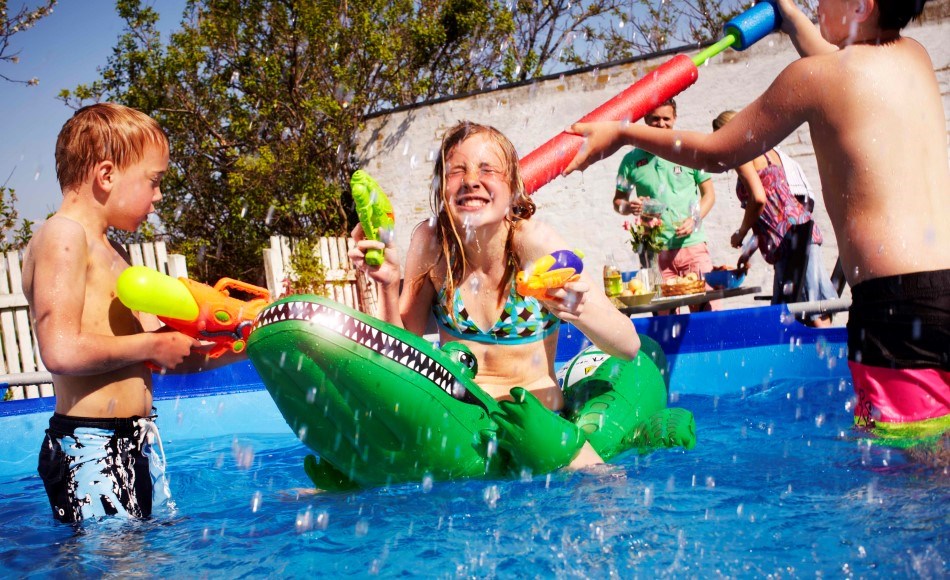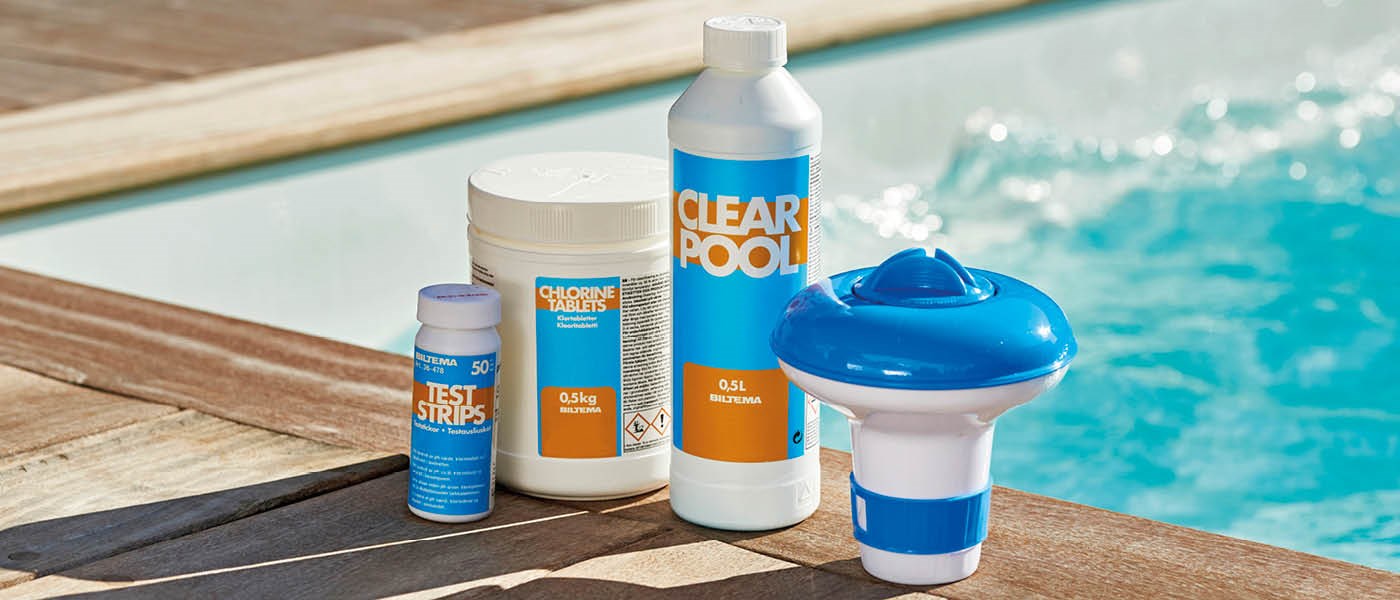Pool Cleaning – how to take care of your pool water
Easy pool maintenance in four steps
To think of:
The water that we bathe in should be properly maintained to ensure the best possible bathing experience.
Remember to first read the packaging carefully to ensure the right dosage of cleaner according to the volume of water in your pool.
1. Check the pH
The pH of the water is crucial for the water quality and for those who swim in the pool. The pH level affects both water balance and disinfection. The first and most important step is therefore to measure the pH, which should be between 7.0 and 7.4.
If the pH is too high, it may irritate the skin and eyes, while reducing the effect of the disinfectant. If the pH is too low, the disinfectant becomes more abrasive for both the pool and those who use it.
2. Disinfect
Pool water is constantly exposed to small particles, dirt, spores, and bacteria. Since bacteria multiply rapidly, chlorine is required to disinfect and counteract bacterial growth. The ideal chlorine level in pool water is 1-1.5 ppm (mg/l). By regularly adding chlorine, you can ensure that the water stays clean and hygienic.
The amount of chlorine needed depends on the temperature of the water and how many people use the pool and how often. The warmer the temperature, the more chlorine is needed. And the more often the pool is used and the greater the number of people who use it, the dirtier the water will become, which means more chlorine will need to be added.
When refilling the pool water or when there are problems with the water quality, shock chlorination must be carried out. This means a higher dose of disinfectant to kill algae and clear the water of other dirt. Wait two days then measure the chlorine level to make sure it is within the ideal range of 1-1.5 ppm (mg/l).
3. Make the water clear
A clarifier should be used to prevent cloudy pool water. This makes the water clear and inviting, while the clarifier prevents deposits in the pool. The clarifier comes in liquid form, and should therefore be diluted in a bucket of water before pouring it into the pool.
4. Flocculate the water
Cloudy water is caused by dirt particles floating around in the water. To fix this, flocculation may be necessary. The flocculant attracts small particles of dirt and forms larger clumps that are then either captured by the pool’s sand filter or sink to the bottom from where they can be vacuumed up with a pool suction cleaner. The result will be crystal clear water.
Flocculant can be used regularly as well as preventively. In pools with a cartridge filter (paper filter), the flocculant must be used sparingly to prevent clogging the cartridge filter.
More about pool care
Read more about pool care and pool maintenance in four steps in our Pool Care Guide. When you buy Biltema’s Pool Care Starter Kit, the Pool Care Guide is included. All the products you need to care for your pool are listed in the guide and on Biltema’s website.






